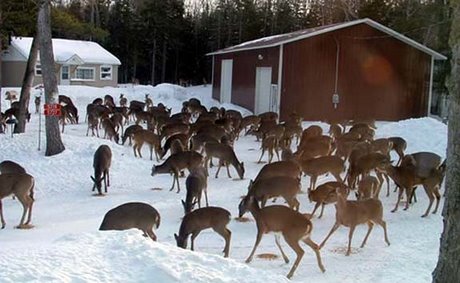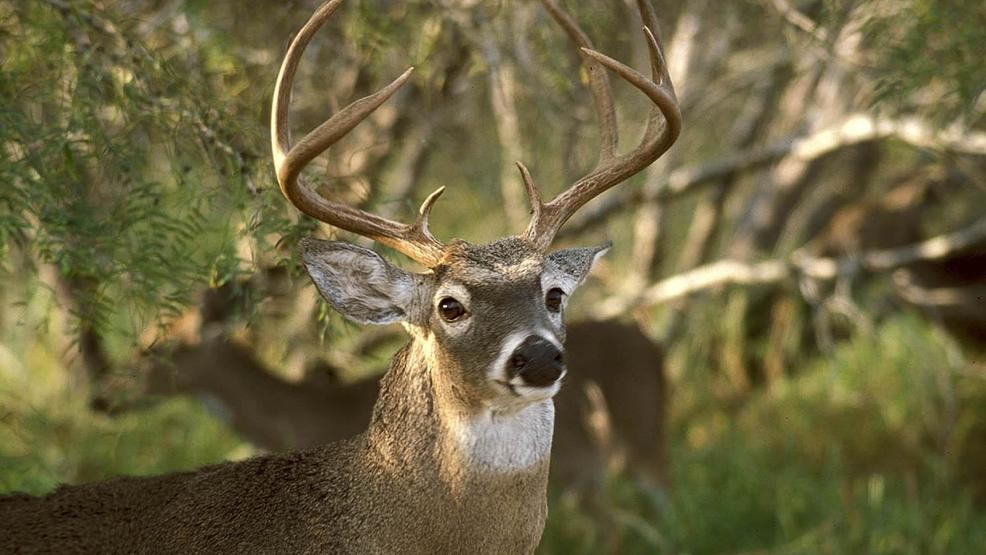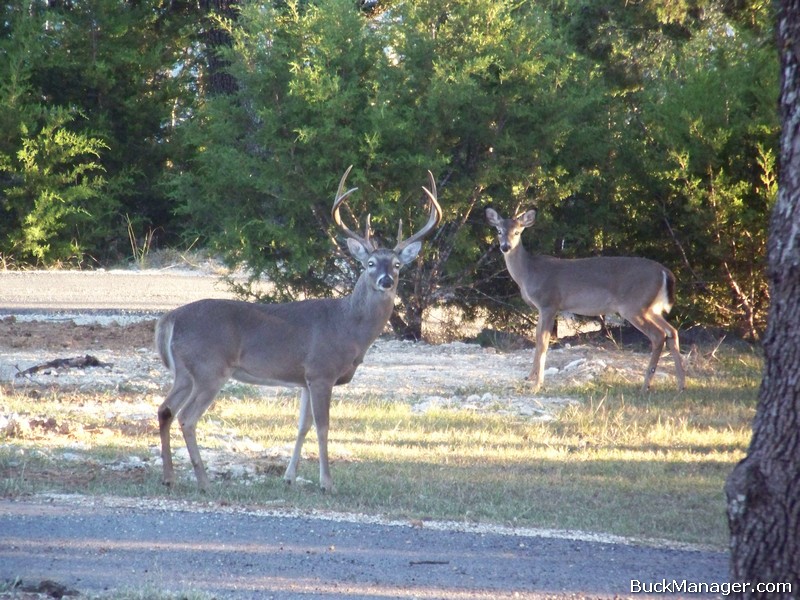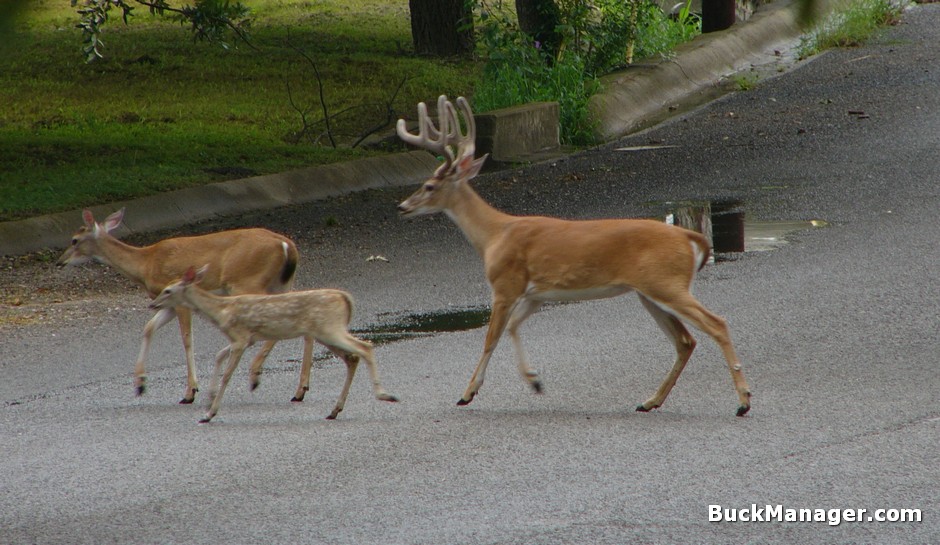Testosterone levels control just about everything on a white-tailed buck, including antler growth and development. During this time of year, a buck’s testosterone level is quite low, but those levels will begin to increase as summer comes to an end and the fall season rolls around. Testosterone levels will peak just prior to the rut. It is during that time when bucks become very aggressive towards one another, establish breeding dominance, and prepare for the rut. That time of year can be rough on a whitetail buck.
When I received this photo of three white-tailed bucks in my inbox a couple weeks ago, the sender wrote that the deer on the left and the right (in the photo above) were bucks. I zoomed in for a closer look and noticed that not only two, but that in fact all three of the deer were bucks. And the photo makes sense because whitetail bucks have low testosterone during the spring and summer, and they can stand to be around one another.
This is the reason for spring and summer bachelor groups. Furthermore, does tend to be more solitary leading up to fawning season. Does will not associate with bucks, or other does for that matter, until several days to a couple of weeks after the fawns are born.
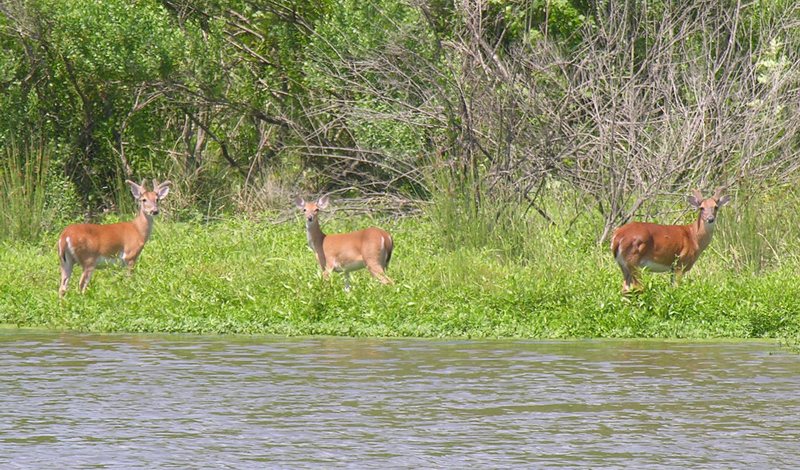
There are other reasons, besides low testosterone, why bucks will not fight very much during the spring and summer. It is because their antlers are quite fragile. Growing antler material is basically is pre-formed cartilage, so trying to fight each other while in velvet would be like butting their noses together. It would not feel good and there would be a lot of blood shed.
Bucks, even with velvet-covered antlers, still have minor disagreements. They, however, settle these spats by standing on their hind legs and using their front legs to kick in the same manner that we often see does fight. Bucks fight only in this particular manner when in velvet during the antler growing period. During the remainder of the year bucks may fight in this manner but often choose head-to-head combat.
Whitetail bucks change drastically between spring-summer and the fall season. With rising testosterone levels, antlers complete their growth and bucks are spurred to shed velvet and rub on trees and shrubs. This rubbing activity and increase in testosterone creates noticeable changes in a buck’s body. During the spring and summer bucks have doe-like necks. With decreased hormones and no antlers up top — and no one willing to fight —their neck muscles shrink in size.
However, increased testosterone and antler rubbing soon condition a buck’s front-end and neck into a fighting machine, typical of what most hunters expect to see during the hunting season. This conditioning helps individual bucks compete for does and helps them submit does, as well. After all, during the rut hunters often see does running away from the bucks!
Whitetail bucks change drastically between the breeding season and the “off season.” These physical changes, in terms of their body and antler growth, are related to an individual buck’s testosterone level. Bucks have low levels of testosterone during the antler growing period and high levels of testosterone just before and during the breeding season.
These physical changes can make it difficult for most hunters to estimate the age of a deer on the hoof during the summer months, but whitetail bucks quickly “whip themselves into shape” for the big show as fall approaches.
